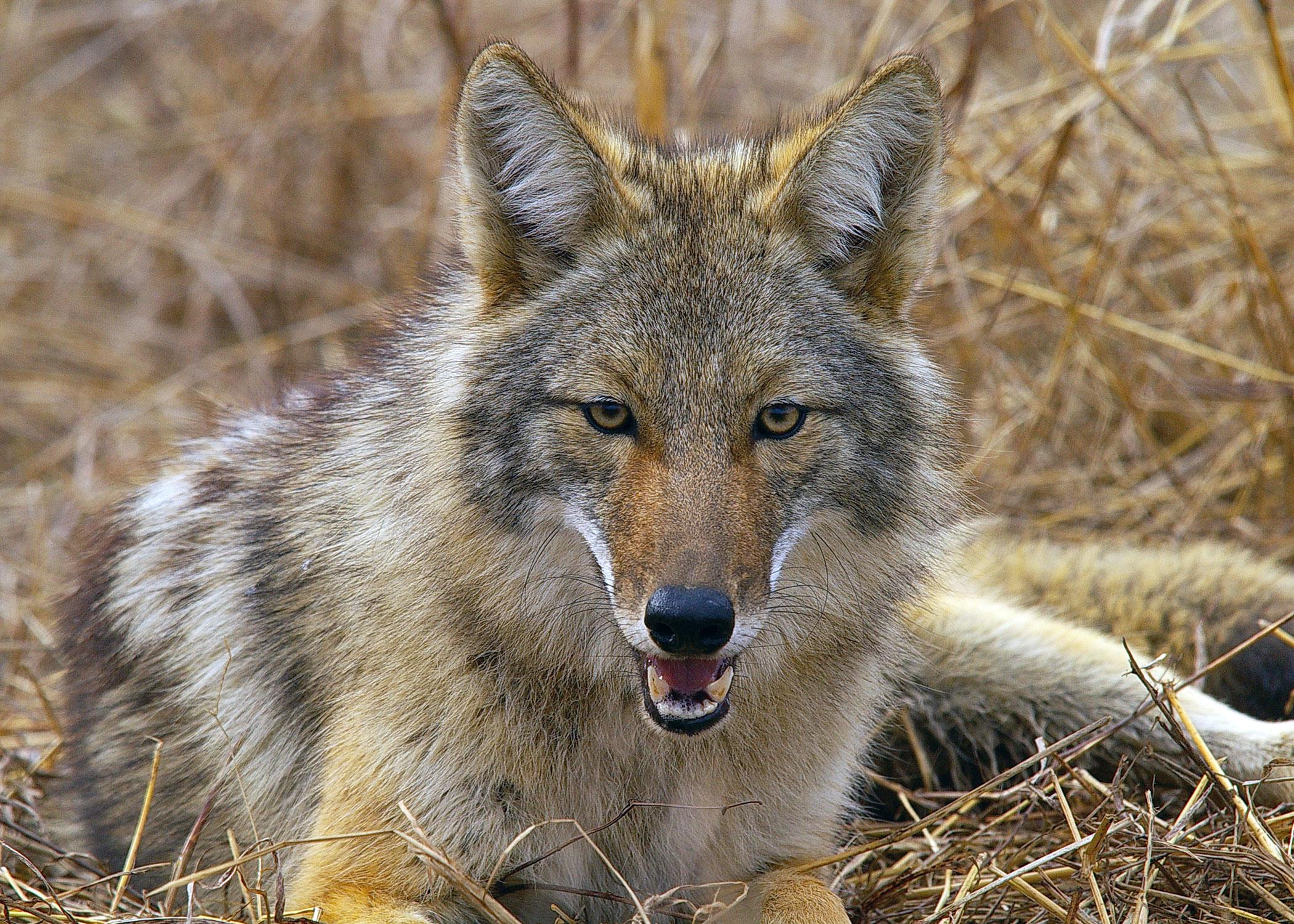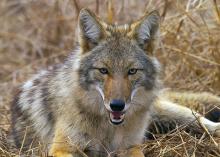Information Possibly Outdated
The information presented on this page was originally released on November 25, 2014. It may not be outdated, but please search our site for more current information. If you plan to quote or reference this information in a publication, please check with the Extension specialist or author before proceeding.
Coyotes are wily predators and pests
MISSISSIPPI STATE -- Before 1965, coyotes did not live in southern states east of the Mississippi River.
However, over the last 40 years, the coyote population has expanded rapidly for several reasons, including loss of larger carnivores such as red wolves and cougar, the introduction of coyotes to the area by humans, reduced trapping in the West and widespread timber harvesting.
An adult coyote weighs between 25 and 35 pounds -- similar to a medium-sized dog. With its pointy ears, tapered muzzle and drooping bushy tail, the coyote resembles a German shepherd or collie. Coyote fur color can vary widely from silver-gray to reddish-brown to black.
Coyotes are often referred to as ghosts because they are frequently heard but rarely seen. The eerie howling of coyotes can be heard in urban and rural settings. The coyote is one of the most urbanized of the wild dog species on Earth. Other evidence of their presence may include tracks and scat, or feces.
A highly opportunistic carnivore, the coyote will adjust its diet and behaviors to take advantage of the most available prey. In urban settings, that “prey” may include small dogs or cats, birds and rodents, unpicked fruits and vegetables from the garden or even the contents of trash cans.
Listed as a nuisance animal by the Mississippi Department of Wildlife, Fisheries, & Parks, the coyote regularly causes conflicts through its interactions with humans.
As with any wild animal, purposefully attracting coyotes to your neighborhood or yard by providing regular food or water can have dire consequences. Once coyotes associate humans or humans’ homes or yards with food, their daytime activities may increase. This, in turn, may lead to increased human-coyote interactions.
Coyote attacks on humans are quite rare. Reported attacks nationwide are often defense related. A coyote may attack if it feels threatened or is protecting a den with pups. Additionally, more coyote attacks are reported from January through April, which is coyote breeding season.
If you think you have coyotes in your neighborhood, what should you do?
First, avoid leaving food outside for your pets or other animals in the neighborhood. Free food may be quite tempting for coyotes. Also, purchase trash cans with secure lids.
Second, do not allow small dogs or cats to go outside unleashed and unsupervised. When walking your dog, always keep it on a leash. Consider carrying a walking stick or noisemaker to ward off a possible attack.
The presence of coyotes in an area does not necessarily mean there’s a problem. If you notice the coyotes acting normally -- making efforts to avoid people, coming out only at night and not attacking small pets -- then leave them alone. Do not create a conflict where none exists.
However, if you encounter a coyote and feel threatened, do not run away. The coyote will interpret that as prey behavior and may act accordingly. Instead, shout, wave your hands and throw something in its direction to scare it away. Typically, coyotes are frightened of humans and will avoid a confrontation if given an escape route.
If coyotes are a confirmed problem where you live, trapping, exclusion and shooting are common control options. In Mississippi, coyotes may be shot any time of the year by landowners on their own property.
For more details on regulations pertaining to the control of coyotes and other nuisance wildlife in the state, visit the Department of Wildlife, Fisheries, & Parks website, http://www.mdwfp.com/wildlife-hunting.aspx.

Editor’s Note: Extension Outdoors is a column authored by several different experts in the Mississippi State University Extension Service.






